-
WELCOME
General Information
Home Best Caribbean Island Anguilla Vacations Air Travel to Anguilla Car Rentals Weather -
SLEEP
-
REALTY & BUSINESS
-
THINGS TO DO
-
EAT
- SPECIAL
- KEEP IN TOUCH
- SAVE 10%
|
|
By: Kristin Bourne
There are some local dishes (some from Anguilla and some from the wider Caribbean region) that once visitors experience them, they are hooked.
Saltfish, a salted and dried fish, is a common local Anguillian dish that may be less commonly found "at home." For those who like fish and flavor, and who are adventurous enough to try it, they are likely to become a lifelong fan of saltfish.
This dish can be found around Anguilla, served in a variety of ways.
Here is how you can prepare your very own saltfish when you're on-island or at home...
As with most things that require a bit of a process, time and patience, they yield more rewarding outcomes. This is true of saltfish.
Saltfish, ready to serve!
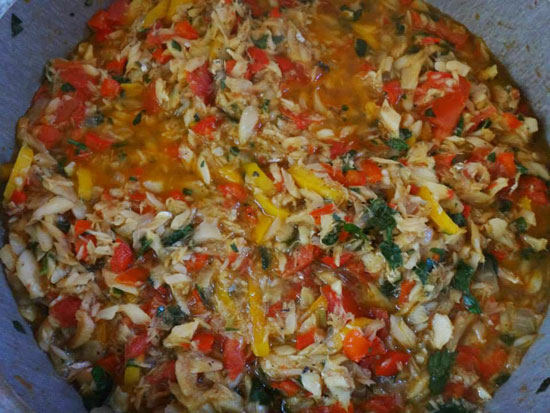
My friend, who was raised on saltfish and has made it his whole life, was my teacher shortly after I moved to Anguilla. I've taken his basics and tailored his version to my taste to create a recipe which has been praised by those who've had it.
I've been told that the best saltfish is made from saltfish purchased from the market with bones. I've never made my saltfish with boneless saltfish and so I can't report on any difference, or if boneless is better than with bones.
What I can say is… for example, the meat of Johnno's steamed whole fish is much more decadent than any fish filet I've had, even the really good ones. This experience and the opinions of experienced cooks is why I've never deviated from the "with bones" tradition.
Grocery stores on-island sell both and both inventories seem to disappear. If you have experienced boneless saltfish, share your opinions here!
For a manageable amount of saltfish, I tend to purchase a package that sells for between $20 and $30 EC ($7.50 - $11.20 US) and I always buy mine from JW Proctor's grocery store in The Quarter.
Yes, it's ugly and a little smelly but you can turn it in to something delicous!
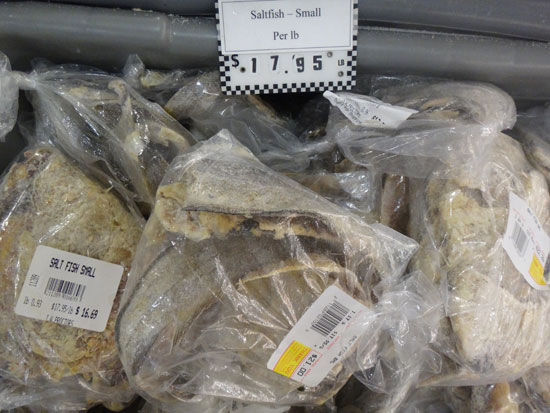
Step 1 Ingredients...
When preparing to make saltfish, begin the night before.
1. Place your unpackaged saltfish in a bowl, throw some brown sugar on top (about 3+ tablespoons) and cover it with water. This, from what I'm told, "cuts the salt." Then, let it soak overnight in your fridge.
Once all soaked, remove the saltfish and boil it in water until the meat is opaque.
2. Let it cool as much as you need in order to touch it. Now comes the most time consuming part of this effort - deboning it.
If I'm not hurried, I don't mind this process. Put on some music, have a glass of wine and start feeling through the fish piece by piece. I've prided myself on making saltfish without a single bone in it.
My reason for this more meticulous, perfectionist-type approach, which is atypical for me is that I once choked badly on a saltfish bone. Nori's mom is my witness, as I was having breakfast with her!
I don't want to do that again and I don't want anyone eating my saltfish to have that experience either. Granted, it's not the worst thing in the world, and Anguillians and others that have been raised eating fish with bones are more suave at making their way through it without choking.
Saltfish from Little Curry House
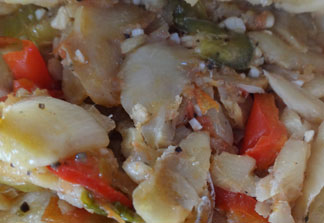
3. So, prepare to feel through the fish and separate the meat from the bones. You'll find you'll get to know the skeleton of the fish pretty quickly and get better at it as you go.
3. Once that process is over, the flavor maximizers enter the picture…
These are all optional and depend on your taste. My neighbor makes her saltfish with carrots, celery and onion. I've found I love the flavor of the peppers, tomato and garlic in mine, plus the softer texture blends in with the texture of the fish. I suppose there's not a wrong way to make saltfish, so you could have some fun experimenting.
Step 2 Ingredients...
1. Start with a drop of coconut oil (about a tablespoon or two) in the middle of a deep-sided frying pan. On low to medium heat, saute the garlic and onion, then add the peppers and let them all get to know each other.
Freshly minced garlic is recommended.
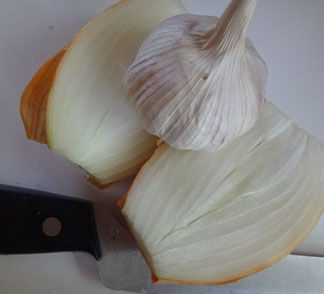
2. Then add the saltfish. I prefer my saltfish in smaller pieces so I take this time to break up any larger pieces with my wooden flat spoon.
While you don't want things "saucy", you don't want them drying up either. I eyeball the mixture and add small amounts of water as it cooks to keep things succulent.
3. The last ingredients to toss in are the tomatoes, parsley and pepper and curry seasoning.
From there, it's just a matter of time and preference. And, it's really all about letting the ingredients blend together, adding water as needed for your desired consistency.
When I dip saltfish on to my plate, I like it to be like a thick stew with just enough liquid slowly percolating away from it that a Johnny cake will happily sop up.
And, that's it! I hope it goes smoothly and tastes terrific :-)
Saltfish is in abundance around Easter and many of the local restaurants serve it on the weekends for breakfast.
Saltfish & Johnny cakes from Tasty's Restaurant
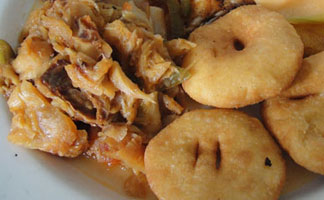
Here's a list of where to find tasty saltfish in Anguilla.
Note: You may want to call ahead to make sure it's on the menu the day you plan to go. In my experience they are all great options yet each different from one another.
My personal favorite, which is also a beautiful environment to enjoy it in, kicks off the list…
And now that we're all in the mood to devour some saltfish, here is Mighty Sparrow's Calypsonian Homage To Saltfish...

Tranquility Beach
(Luxury Hotel & Residences)

Long Bay Villas:
The Ultra-Luxury Villas
Sky, Sea & Sand

Santosha Villa Estate:
Anguilla's Most Sophisticated
Ultra-Luxury Villa
Facebook Comments
Have your say about what you just read! Leave a comment in the box below.